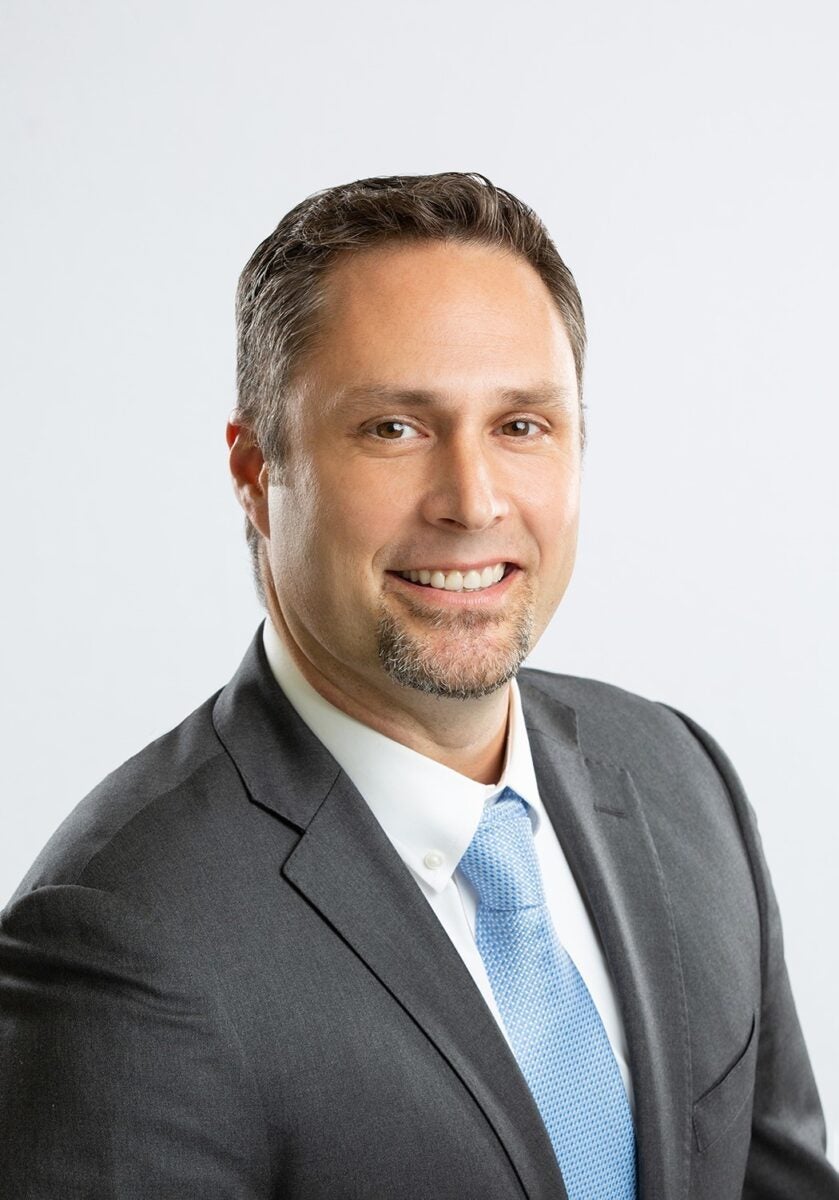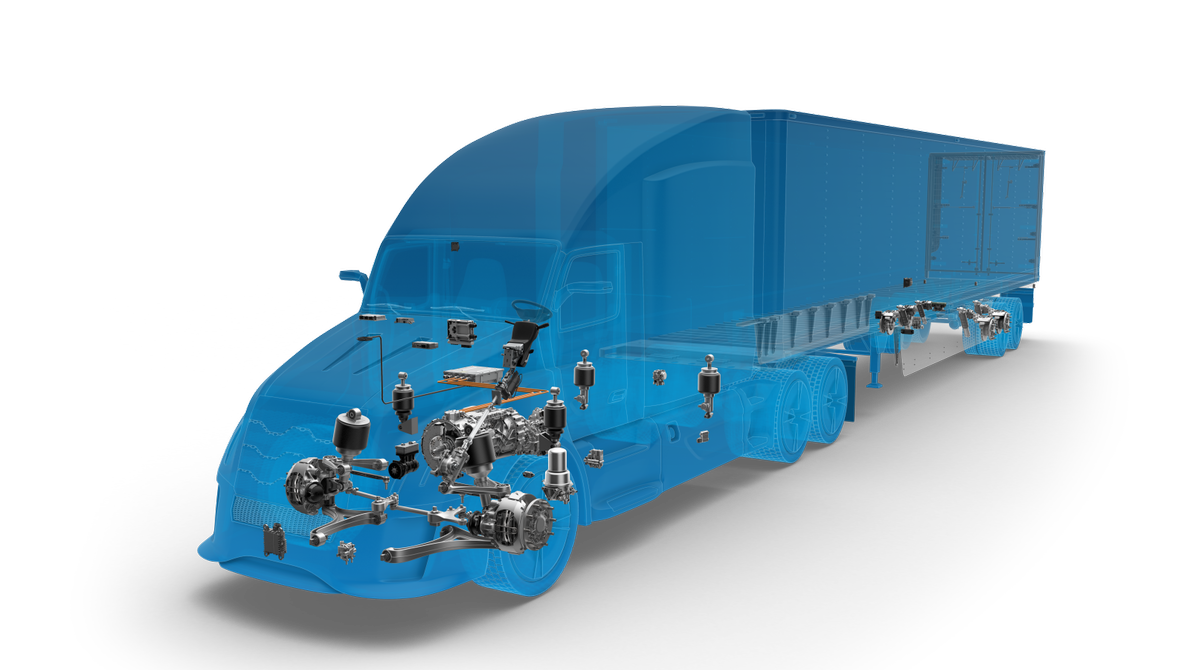Julien Plenchette is in charge of the North and South American operations of ZF, the German-based automotive and commercial vehicle supplier that has vaulted to No. 1 in the world through a pair of major acquisitions in the past seven years.
But he is just as committed to another calling. Plenchette and his wife, Rabecca, are foster parents, having provided real-world safety to 10 children in the past few years while raising two of their own.
The lessons he has learned in emergency parenting situations across racial and cultural lines have helped him in working to mesh cultures in mergers with TRW Inc. — $12.4 billion in 2015 — and with Wabco Holdings — $7 billion in 2020. ZF this year combined its commercial vehicle operations with Wabco’s to create a single Commercial Vehicle Solutions division of the $42 billion private company based in Friedrichshafen, Germany.
Watch now: Exploring ZF, the world’s largest commercial vehicle supplier
Despite the company’s size — 157,500 employees 188 locations in 31 countries — you can be excused if the ZF name doesn’t sound too familiar.
“We are not into consumer goods, so in that sense, we don’t have as much of a need to be well known to the general public,” Plenchette said. “To be recognized as a public brand is not as important to us.”

What does matter is being known among legacy to startup truck manufacturers as a single-source supplier of driveline, steering, braking and advanced driver assistance systems with a service network to maintain them.
ZF partners with several autonomous trucking startups, notably TuSimple, Embark Trucks, Kodiak Robotics and Locomation.
Plenchette talked about ZF North America’s goals with FreightWaves in a February interview. Responses are edited for length and clarity.
FREIGHTWAVES: How does the commercial vehicle supply landscape change with the recent announcement of Cummins’ acquisition of Meritor?
PLENCHETTE: “We’re going through a massive transformation as an industry toward autonomy that requires all of us to take a look at whether we are at the right speed. Do we have the right technology? Do we have the right know-how? I think you’ll see a lot more of those consolidations. I expect people to look for the talent and technologies they need to be at the right speed.”
FREIGHTWAVES: Synergy is an overused word when it comes to mergers like the $7 billion Wabco merger. What kind of cultural workouts and absorption need to happen?
PLENCHETTE: “For one year, we had two commercial vehicle divisions working side by side and learning from each other. We looked at trying to create the best of both. We have totally complementary technologies and portfolios, so that was the easy part. There was not a lot of overlap, but we really focused on how to serve our customers at the end.”
FREIGHTWAVES: What lessons from merging stand out?
PLENCHETTE: “We are going through a transformation. There was an understanding that what took us to where we were is not going to necessarily take us to where we’re going to go. There was a deep reflection on both sides. What is the best coming out of the ZF organization and processes? What came out of Wabco because we recognize that Wabco had a longstanding and deep successful relationship with customers as well.
“What we’ve done for instance is we’re organized in regions.The region was a recognition that we need to be global and develop global solutions. But we need to be local with regard to customer service and understanding the needs of the local market.”
FREIGHTWAVES: What special efforts did it take to keep this moving through the pandemic and more recently the supply chain crisis?
PLENCHETTE: “Not being able to be face to face was certainly an additional challenge. But our communications team did a fantastic job in designing processes and strategy to keep both divisions informed and really have a deep connection with the employees at the lowest level in the organization. We made use of a lot of new virtual tools to hear directly from our people and to consider that in our decisions. There is some level of efficiency in being able to connect globally. When you’re online, other than time differences, it is probably more efficient.”
FREIGHTWAVES: How are customers adapting to having a single source for autonomous, connected, electrified and safety systems, or ACES?
PLENCHETTE: “I think our goal is to be prepared to offer a value proposition [whether] a one-stop shop for a fully integrated system or a mix of components systems. Having a deep understanding of how they interact with each other has value in itself. What we really see is that we’re being approached as a partner because we have the right technologies in a number of areas. As we become more and more one organization, we will continue to see those successes.”
FREIGHTWAVES: Being a German company in the same country with major manufacturers like Daimler Truck and Traton Group, and even Volvo Group in Sweden, must be an advantage. How do having these established relationships help what you do in ZF North America?
PLENCHETTE: “A lot of the new technologies that are designed have to be developed as global platforms and then have local application of those solutions. For example, future braking will tend to be much more uniform than it is today. We have to be able to develop global designs that are modular and that we can tailor for the region. The relationship we have in Europe with those large original equipment suppliers allows us to work with them on a global scale and then with their local branches in terms of application and adaptation. It also helps in managing supply chain challenges on a global basis between regions.”

FREIGHTWAVES: You’ve said that being known to consumers is not a priority. But there must be some products, at least in the aftermarket, that would ring a bell.
PLENCHETTE: “There are some technologies that we provide to the end user, whether it’s passenger cars or fleets. You can see that crab walk on the new GMC Hummer. And that provides some recognition for people that go to a dealership not really knowing [about ZF]. We would love to have people walking into dealerships and say, ‘I’m going to buy this vehicle because of ZF. In this fleet world, I think that’s the case in some areas. I think we see this with the PowerLine transmission just because of the performance it provides.”
FREIGHTWAVES: What about the brand equity in the names of the companies ZF has acquired? How are you taking advantage of that?
PLENCHETTE: “Our corporate brand is now ZF. But Wabco survives as a name for the aftermarket just like Sachs for clutches, shocks and dampers and TRW for passenger car ball joints and steering linkage.”
Related articles
GSCW chat: ZF’s challenges chasing microchips to keep parts flowing
ZF completes $7B takeover of Wabco Holdings
TuSimple and ZF to develop tech for mass-produced autonomous trucks







